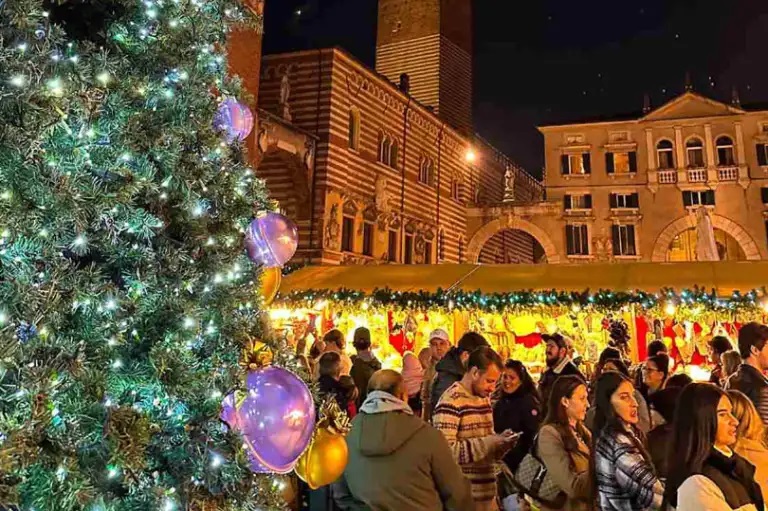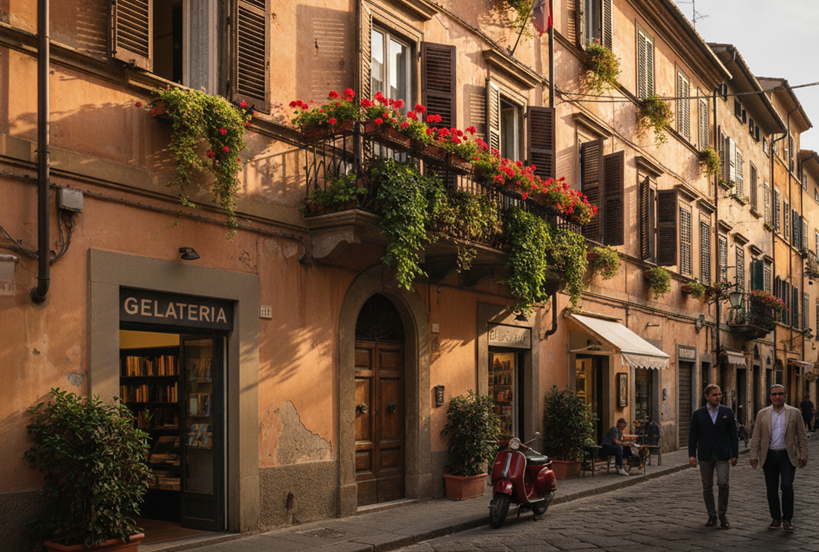12 Enchanting Small Towns in Italy You Must Visit
by Adriana ruiz
Italy, a country renowned for its rich history, exquisite cuisine, and breathtaking landscapes, is also home to countless small towns that offer a more intimate and charming experience compared to the bustling cities. These lesser-known gems, each with a population under 10,000, boast incredible history, culinary delights, and stunning countryside views. This curated list from Travel and Leisure Magazine highlights twelve of the best small towns in Italy, each offering a unique slice of Italian culture and beauty on a smaller scale. From coastal villages to medieval hilltop towns, these destinations promise an unforgettable journey through Italy’s most picturesque locales.
Porto Venere, Liguria
View this post on Instagram
Porto Venere, also known as Portovenere, is a picturesque town located on the Ligurian coast of Italy, in the province of La Spezia. This charming fishing village is renowned for its colorful houses, historic churches, and stunning views of the Mediterranean Sea. Porto Venere, along with the nearby Cinque Terre and the islands of Palmaria, Tino, and Tinetto, is a UNESCO World Heritage Site. The town’s highlights include the Church of St. Peter, perched dramatically on a rocky promontory, and the Doria Castle, which offers panoramic views of the Gulf of Poets. With its blend of natural beauty, rich history, and vibrant culture, Porto Venere is a must-visit destination for anyone exploring the Italian Riviera.
Treia, Marche
View this post on Instagram
Treia is a picturesque town located in the province of Macerata, in the central region of Marche, Italy. Perched on a hilltop, Treia offers stunning panoramic views of the surrounding countryside and the Potenza river valley. The town is known for its well-preserved medieval architecture, including ancient walls and charming cobblestone streets. Key attractions include the Piazza della Repubblica, which is the heart of the town, and the Teatro Condominiale, a beautifully decorated 19th-century theatre. Treia also boasts a rich cultural heritage, with traditional events like the annual Disfida del Bracciale, a historic ball game. The local cuisine is another highlight, with specialties such as “calcione,” a delicious pastry filled with cheese. Treia’s blend of history, culture, and natural beauty makes it a hidden gem in the Marche region.
Anghiari, Tuscany
View this post on Instagram
Anghiari is a charming medieval town located in the province of Arezzo, Tuscany. Nestled on a hill overlooking the Tiber River valley, Anghiari is renowned for its well-preserved historic architecture and picturesque streets. The town is famous for the Battle of Anghiari, a significant 1440 conflict between Florence and Milan, which was immortalized in a lost fresco by Leonardo da Vinci. Visitors can explore the ancient city walls, the Palazzo Pretoriano, and the Badia di San Bartolomeo. Anghiari’s narrow, cobblestone streets are lined with stone houses adorned with flowers, creating a beautiful and authentic medieval atmosphere. Recognized as one of the “most beautiful villages in Italy,” Anghiari offers a unique blend of history, culture, and scenic beauty, making it a must-visit destination in Tuscany.
Brisighella, Emilia-Romagna
View this post on Instagram
Brisighella, nestled in the picturesque Emilia-Romagna region of Italy, is a charming medieval village renowned for its historical and natural beauty. Located in the Lamone river valley, this enchanting town is framed by the Tuscan-Romagnolo Apennines and is celebrated for its three iconic hills, each crowned with a significant landmark: the Manfredian Fortress, the Clock Tower, and the Monticino Sanctuary. Brisighella’s narrow, winding streets and ancient architecture offer a glimpse into its rich past, while its status as a “Slow City” and a member of the “Most Beautiful Villages of Italy” underscores its commitment to preserving a tranquil and authentic atmosphere. Visitors can enjoy local delicacies such as the prized DOP Extra Virgin Olive Oil and Sangiovese wine, making it a perfect destination for food and wine enthusiasts. Whether exploring its historical sites or savoring its culinary delights, Brisighella promises a memorable and immersive experience.
San Vito Lo Capo, Sicily
View this post on Instagram
San Vito Lo Capo, located on the northwestern coast of Sicily, is a picturesque coastal town renowned for its stunning white sandy beaches and crystal-clear turquoise waters. Nestled between mountains, this charming town offers a blend of natural beauty and rich cultural heritage. The town’s main beach, Spiaggia San Vito lo Capo, is often hailed as one of the best in Italy, attracting visitors with its pristine sands and vibrant atmosphere. San Vito Lo Capo is also famous for its annual Couscous Fest, celebrating the town’s culinary ties to North Africa. Beyond the beach, visitors can explore historical landmarks such as the 15th-century Santuario de San Vito and enjoy outdoor activities like hiking and climbing in the surrounding mountainous terrain. Whether you’re looking to relax by the sea or immerse yourself in local culture, San Vito Lo Capo offers a delightful escape.
Cortina d’Ampezzo, Veneto
View this post on Instagram
Cortina d’Ampezzo, often referred to as the “Queen of the Dolomites,” is a stunning alpine town located in the Veneto region of Northern Italy. Nestled in the heart of the southern Alps, this picturesque destination is renowned for its breathtaking scenery, world-class skiing trails, and vibrant après-ski scene. Cortina d’Ampezzo gained international fame as the host of the 1956 Winter Olympics and will be a host again for the 2026 Winter Olympics. It continues to attract visitors with its luxurious accommodations, high-end shops, and gourmet dining options. The town is surrounded by majestic peaks such as the Tofane, Cristallo, and Sorapiss, offering a paradise for outdoor enthusiasts year-round. Whether you’re hitting the slopes in winter or exploring the numerous hiking and climbing routes in summer, Cortina d’Ampezzo promises an unforgettable experience in one of Italy’s most beautiful mountain settings.
Tropea, Calabria
View this post on Instagram
Tropea, often referred to as the “Pearl of the Tyrrhenian Sea,” is a stunning coastal town in Calabria, Italy. Perched on a cliff overlooking the sea, Tropea is renowned for its breathtaking views, crystal-clear waters, and beautiful sandy beaches. The town’s historic center is a maze of narrow streets lined with charming cafes, restaurants, and shops, all set against a backdrop of ancient buildings and churches. One of the most iconic landmarks is the Sanctuary of Santa Maria dell’Isola, a picturesque church situated on a rocky promontory. Tropea is also famous for its sweet red onions, which are celebrated in local cuisine and festivals. Whether you’re exploring its rich history, relaxing on its pristine beaches, or indulging in its culinary delights, Tropea offers a perfect blend of natural beauty and cultural heritage.
Norcia, Umbria
View this post on Instagram
Norcia, a charming town in southeastern Umbria, Italy, is renowned for its rich history and stunning natural surroundings. Nestled in a wide plain near the Monti Sibillini mountain range, Norcia offers breathtaking views and a serene atmosphere. The town is famous for being the birthplace of St. Benedict, the founder of the Benedictine monastic order, and his twin sister, St. Scholastica. Norcia’s medieval architecture, including the Church of Saint Benedict and the Castellina fortress, adds to its historical allure. The town is also celebrated for its culinary delights, particularly its sausages and ham, known as norcineria. Whether you’re interested in history, nature, or gastronomy, Norcia has something to offer every visitor.
Palmanova, Friuli Venezia Giulia
View this post on Instagram
Palmanova, located in the Friuli Venezia Giulia region of Italy, is a unique and fascinating town known for its distinctive star-shaped layout. Founded by the Venetian Republic in 1593, Palmanova was designed as an ideal Renaissance city and military fortress. The town’s nine-pointed star design, complete with ramparts and a surrounding moat, was intended to provide optimal defense against invaders. Today, Palmanova is recognized as a UNESCO World Heritage Site and is celebrated for its well-preserved fortifications and historical significance. Visitors can explore the central Piazza Grande, the impressive city gates, and the various museums that showcase the town’s rich history. Palmanova’s unique architecture and historical charm make it a must-visit destination for history enthusiasts and travelers alike.
Bosa, Sardinia
View this post on Instagram
Bosa, a picturesque town on the west coast of Sardinia, Italy, is renowned for its vibrant, pastel-colored houses and rich history. Nestled along the Temo River, Bosa is dominated by the medieval Malaspina Castle, which offers stunning views of the town and surrounding landscape. The town’s charming streets are lined with historic buildings, including the Cathedral of Bosa and several other beautiful churches. Bosa is also known for its traditional crafts, such as leather tanning, and its delicious local cuisine. Whether you’re exploring its historical sites, enjoying the scenic riverfront, or indulging in local delicacies, Bosa offers a unique and memorable experience for visitors.
Otranto, Puglia
View this post on Instagram
Otranto, a picturesque coastal town in the province of Lecce, Puglia, is renowned for its rich historical and cultural heritage. Located on the Adriatic Sea, it is the easternmost town in Italy and has long been a strategic maritime hub. The town’s historic center, enclosed by ancient defensive walls, is a maze of narrow streets filled with charming old buildings, bars, restaurants, and shops. Key landmarks include the Cathedral of Otranto, featuring an extraordinary 12th-century mosaic floor depicting the Tree of Life, and the imposing Aragonese Castle. Otranto’s beautiful beaches and crystal-clear waters make it a popular destination for tourists seeking both relaxation and a glimpse into Italy’s storied past.
Civita di Bagnoregio, Lazio
View this post on Instagram
Civita di Bagnoregio, a small village in the Lazio region of Italy, is often referred to as “the dying city” due to its precarious position atop a crumbling tufa hill. Founded by the Etruscans over 2,500 years ago, this enchanting town is accessible only by a pedestrian bridge, adding to its secluded charm. The village’s medieval architecture, narrow streets, and stunning views of the surrounding Valle dei Calanchi create a picturesque and timeless atmosphere. Despite its dwindling population, Civita di Bagnoregio attracts numerous visitors who come to experience its unique beauty and historical significance. The town’s efforts to preserve its heritage have led to its inclusion in the list of “The Most Beautiful Villages of Italy”.
Whether you’re drawn to the coastal allure of Porto Venere, the medieval charm of Anghiari, or the unique architecture of Palmanova, Italy’s small towns offer something for every traveler. Each of these twelve destinations provides a distinctive blend of history, culture, and natural beauty, making them perfect spots to explore and enjoy the authentic Italian experience. As you plan your next trip to Italy, consider venturing off the beaten path to discover these remarkable towns, where timeless beauty and rich traditions await you at every turn.
Subscribe to our newsletter to access content and updates to help navigate life as an expat in Italy. If you need help with your citizenship process, language courses, or general expat life in Italy, email us at [email protected].

Single Female Travelers in Italy: Practical, confident, and connected
Rome rewards curiosity and courage. This guide offers grounded tips, cultural insight, and community support so you can explore with confidence—day and night, solo and on your own terms. Start with confidence “Solo doesn’t mean alone.” In Rome, you’ll find friendly locals, layered history, and a vibrant expat network. A little preparation goes a long […]

Christmas in Italy 2025: A Magical Season for Expats Across Italy
Christmas in Italy isn’t just a holiday — it’s a season full of history, flavor, celebration, and heartfelt traditions that bring families, towns, and entire regions to life. Whether you’re an expat experiencing your first Italian Christmas or a returning fan of the magic, 2025 promises some beautiful celebrations across the country. Here’s what to […]

Tax Residency Incentives in Italy — Your Guide (2025)
Italy offers several tax incentives designed to attract retirees, entrepreneurs, high-net-worth individuals and remote workers. These regimes can be extremely generous — but they are complex and often conditional. This guide explains the main options in 2025, who qualifies, and how we can help you plan a compliant move. Why Italy Offers Tax Incentives Italy […]

Navigating Healthcare in Rome: A Guide for Expats with English-Speaking Doctors
Moving abroad is exciting, that is until real life hits. I came to Italy from Alaska in 2021 for what was supposed to be a four-month study program in Florence. Four years later, I’m still here, now living and working in Rome. When we plan our dolce vita, we think about pasta, museums filled […]

Major Tax Incentives for Home Renovation in Italy (2024-2033)
Taxpayers carrying out renovation work on residential buildings and common areas of residential complexes in Italy are entitled to claim significant tax relief. This benefit allows individuals to deduct a portion of the expenses incurred from their Italian personal income tax (Irpef). This article outlines the rules, beneficiaries, and changing deduction rates for these home […]

How to Save on Taxes When Buying Your First Home in Italy
Buying a first home in Italy comes with significant tax benefits and incentives designed to make property ownership more accessible. Whether you are an Italian national or a foreigner, understanding these advantages can translate into substantial savings on your property purchase. The “Prima Casa” regime is essentially a set of tax reliefs applicable to the […]

Bringing Your Family to Italy: A Guide for Non-EU Citizens
For non-EU citizens residing in Italy, having your family with you is a tangible goal. Italian law provides a framework for family reunification, allowing you to bring close relatives to live with you under specific conditions. This guide outlines the key requirements, procedures, and rights to help you navigate the process. Who Can Apply for […]

How to Become a Self-Employed Worker in Italy
Are you a non-EU citizen wishing to work as a self-employed worker in Italy? This guide explains the conditions you must meet, the procedures to follow, and the rights you can enjoy during your stay. Conditions for Self-Employment To legally engage in independent work in Italy, non-EU citizens must satisfy several conditions and obtain the […]







